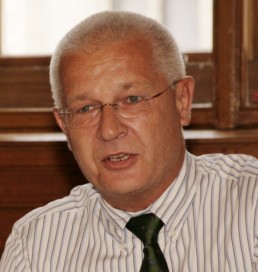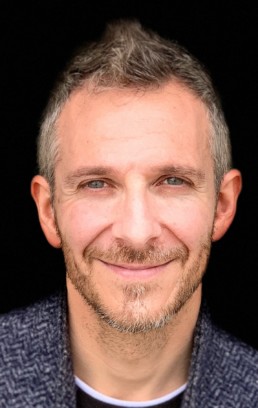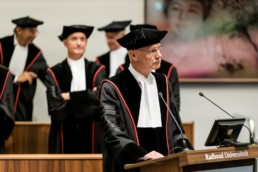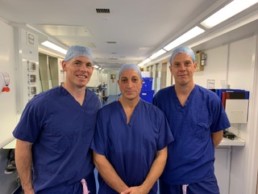 “Render therefore unto Caesar the things which are Caesar’s…”
“Render therefore unto Caesar the things which are Caesar’s…”
It was October 1992. Fourteen people who attended a successful Hamburg meeting sponsored by Waldemar Link met together in the Hafenhotel and decided to become the founder members of a very new institution the name of which was… European Hip Society. This ambitious project was initiated by the first president, Reginald Elson and Elmar Nieder from the Hamburg Endoklinic. The first draft of an official constitution was circulated to the founder members, and thanks to the financial support given by Link, EHS got started there.
This nice story has been quoted in the booklet of the EHS history, recently edited by another founder Member (Spain), Eduardo Garcia-Cimbrelo… Our first sponsor was then Helmut D. Link and decided to remain anonymous about his financial help to our EHS… Twenty-seven years later, it is time to “render unto Caesar the things which are Caesar’s” and officially thank him for his very first sponsorship…
Things were going on later on with the Paris meeting in April 1993, and this first international meeting was a real success. Having attended this inaugural Parisian meeting at the beginning of EHS story remains for me a precious memory and as the current president, a great pride in my professional life…
We nowadays widely extend our scientific activities… Our Scientific Society is indeed dedicated to the best knowledge in Hip Surgery, gathering in 33 European countries and others from Asia, Africa, the Americas and Australia, more than 400 orthopaedic surgeons. While discussing with our Canadian colleagues, they said they are very close to European surgical trends, and we are proud to welcome them as the next guest nation in the coming Lille 2020 EHS Congress. Recently we were invited to share our orthopaedic views and experience with the Lebanese community of surgeons, and next May 2020, a combined meeting will be set together with the Lebanese American University of Beirut. We have had before several fruitful participations in all EFORT annual congresses, as well as in the German DKOU, the Spanish SECOT, the Italian World Arthroplasty congress in Rome, without forgetting the Ukrainian or Hungarian meetings, and naturally the SIOT 2019 congress in Rome, just around the corner…
The coming 14th EHS international congress in Lille will help us again to proudly “bring orthopaedic surgeons together”, through a very appealing agenda which as previously assessed, provides “basic science, current trends, new technologies… The EHS aims to stay at the cutting edge of knowledge and to create within Europe and overseas a sound link between each surgeon interested in Hip Surgery”… Dear colleagues and friends, we need each of you to go even further in hip-related scientific activities with us at EHS. Join us at www.ehs2020.org!
With the best regards from the entire EHS Board,
Jean-Alain Epinette, MD
President
Letter from the Secretary General, Professor Eleftherios Tsiridis

Dear Members,
It has been one year since my book, “The Adult Hip – Master Case Series and Techniques”, was published by Springer and I would like to say a sincere thank you to all the EHS experts who contributed interesting cases for this successful project. The book has attracted over 12,000 downloads so far.
We wish a warm welcome to new Full EHS Members Dr Federico Giardina of Bologna, Italy and Prof Julien Girard of Lille, France, as well as new Young Member Dr Pedro Miguel Reis Campos of Arruda dos Vinhos, Portugal. Finally, we welcome back Dr Heinz Winkler of Dross, Austria.
Prof Kjærsgaard-Andersen and EHS Past President Prof Schreurs are representing EHS at the joint symposium of SIOT & EHS in Rome on Friday 8th November. Prof Kjærsgaard-Andersen also kindly writes below as our EHS Ambassador of the month and will join me at the EHS-organized MAST Course on Current Concepts in Advanced Arthroplasty Surgery in Thessaloniki in December (6-8th), where he will give a key note speech on “The Dilemma when THA is the only option left in the adolescent, young patient”. See our Hip Meetings Calendar for more.
There are a few days left to apply for the EHS Travelling Fellowship 2020, which will support two hip surgeons to visit top orthopaedic centres in Europe for three weeks during Spring 2020. Candidates still have time: deadline 31st October 2019. Meanwhile, below is the excellent report from Dr Wim Rijnen, the Dutch EHS Member that won the BHS Fellowship with Prof Haddad last month around UK. Enjoy.
Best wishes,
EHS Secretary General, Professor Eleftherios Tsiridis
EHS Ambassador of the Month, Per Kjærsgaard-Andersen
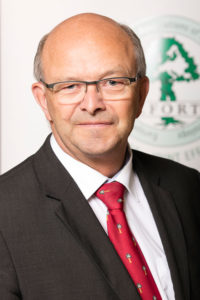 It is a great honour to be the Ambassador for the European Hip Society. Being part of the core within EFORT (European Federation of the National Associations for Orthopaedics and Traumatology) for a decade, and besides being a long-standing member of EHS, it has been a great pleasure to realize the truly deep interest in collaboration between the two organizations, with the overall goal to educate and research within the hip pathology, to improve treatment of coming generation hip patients.
It is a great honour to be the Ambassador for the European Hip Society. Being part of the core within EFORT (European Federation of the National Associations for Orthopaedics and Traumatology) for a decade, and besides being a long-standing member of EHS, it has been a great pleasure to realize the truly deep interest in collaboration between the two organizations, with the overall goal to educate and research within the hip pathology, to improve treatment of coming generation hip patients.
EHS has a significant position, not only within Europe – but worldwide. Also, EHS has a highly recognized group of European leaders within or close related to the Board. This combined with a well-established bi-annual congress and our own scientific journal, makes an important impact on clinical colleagues cross mainly Europe, when they select educational congresses and sessions to join.
For that reason, EHS for sure will withstand strong in all aspects, although complexity in the manufactures compliance rules and new medical device regulation, for now have shown unforeseen impact on both surgeons, patients and also societies.
Being in my “third age”, however – I feel even more prepared to stand-by and assist in fulfilling the aims of both EHS and EFORT.
I did my first total hip replacement back in 1988 – astonishing 31 years ago! What has happened during this period? Well, we still use an acetabular cup and a femoral stem, although within the period several attempts have been done to find “new ways”.
In 1988 the stem was a mono-block component. Modularity was developed to ease reconstruction of the patient’s anatomy and revisions surgery. Consequences: Metal debris and its negative outcome. Neck modularity has been withdrawn from the marked by most companies for that reason. When will head-modularity be withdrawn? We then will be back with mono-block stems.
Osteolysis in the cement-bone interfase was initially considered to be “cement-disease”. Therefore, non-cemented components increased in numbers quickly world-wide. Later, the “cement-disease” was learned to be due wear products from the poly-insert. The quality and sterilization of the poly was significantly improved, and since the latest generation highly crosslinked poly was introduced in 2008, osteolysis is no more an issue. Consequence: We however still use the significantly more expensive non-cemented implants, although registries like the Swedish Hip Arthroplasty Registries have shown comparable results between cemented and non-cemented implants. The true cement-paradox.
And I could list several other examples how we as hip surgeons “forget the past” and do not take that period in good enough consideration in our daily praxis.
However, the most significant change over the 30 years – at least in the Nordic area – has been the dramatic change in the programme for a standard total hip replacement patient. In 1988, a patient was normally hospitalized for 15-20 days, staying in bed for 5-6 days – up to today, where 95% of patients are mobilized fully on the day of surgery, 10-15% discharged on that same day as surgery, and in total 85% discharged within 24 hours after surgery. Consequence: We would think that waiting-list for surgery would have disappeared, but no – we are doing more and more surgeries. Total hip replacement is no longer only for the elderly, retired patients – but also for younger, suffering active patients. Moreover, we have a more active elderly generation – claiming an active “fourth age” of their life.
Therefore, total hip replacement – and especially non-replacement surgeries, will expect to increase in demand for our coming colleagues. So, EHS has a big demand to stand clear in education of coming hip surgeons, to make sure when we need a total hip replacement, we also have been the ones educating them to do the perfect approach.
Finally, a short summary of my career. My first training was under the leadership of Professor Otto Sneppen at Orthopaedic Hospital in Aarhus. Here I also started as senior surgeon at Aarhus University Hospital (AUH) and became an associated professor at AUH. As a young scientist, I in 1995 initiated the Danish Hip Arthroplasty Registry together with senior surgeon Ulf Lucht. In 1999, I moved on to Vejle Hospital as Head of Section for Hip and Knee Replacement – and as Associate professor at South Danish University. From 2008-2010 I served as President in the Danish Orthopaedic Society; was Congress President for the 12th EFORT Congress in Copenhagen in 2011; Secretary General for EFORT from 2012-2016 – and it’s President from 2018-2019.
I am much excited to contribute as an Ambassador for EHS, and look forward to a continuing great collaboration between two of the leading orthopaedic organization in Europe – EHS and EFORT.



